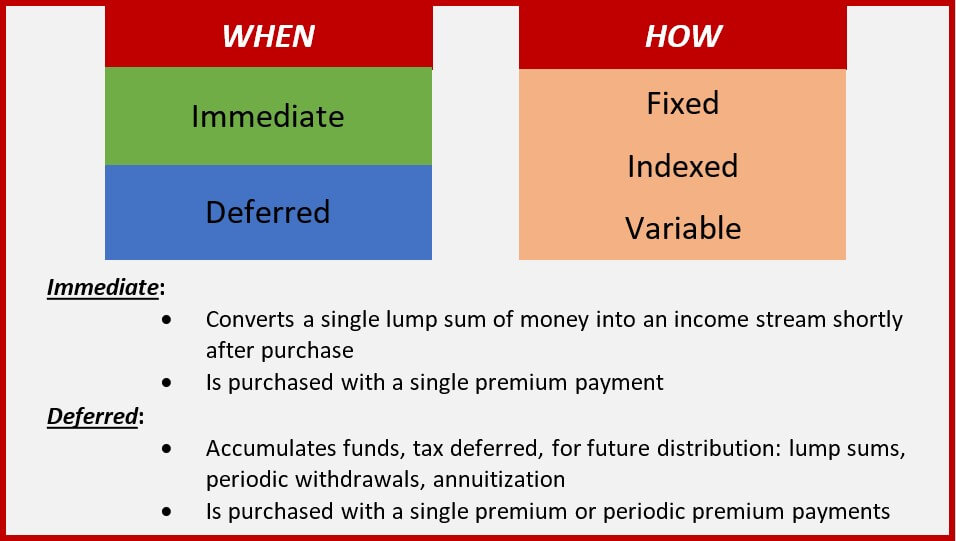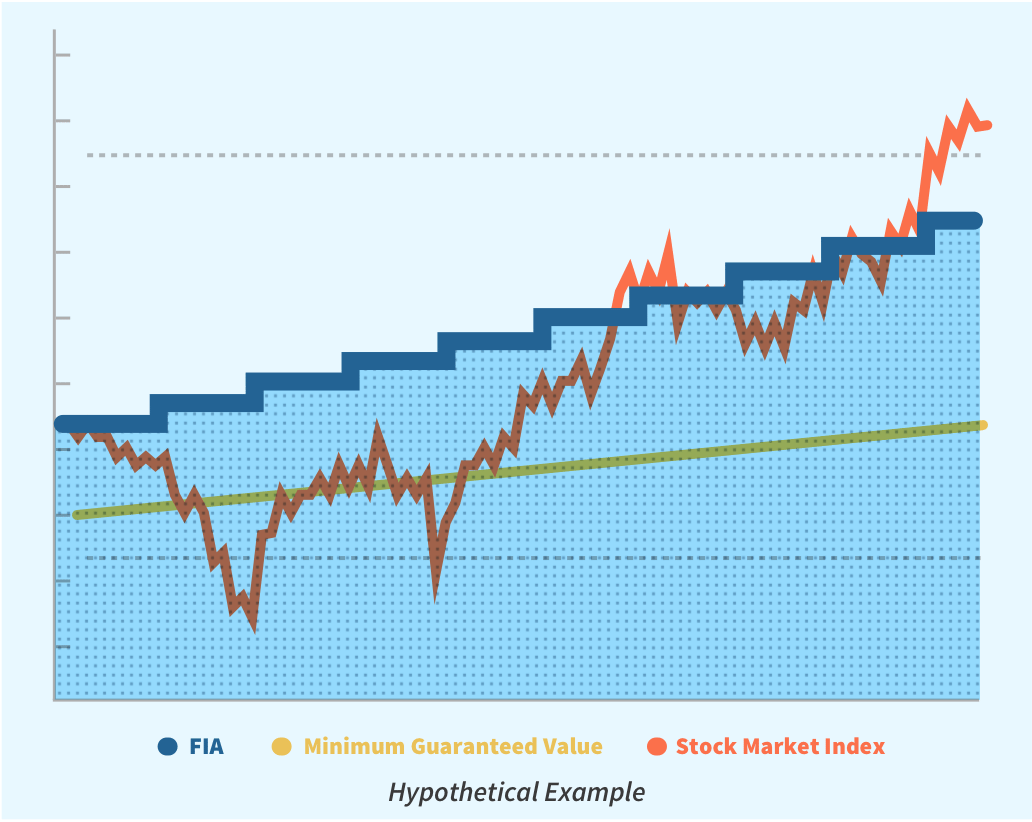All Categories
Featured
Table of Contents
Equally as with a fixed annuity, the proprietor of a variable annuity pays an insurer a swelling sum or collection of settlements in exchange for the assurance of a series of future payments in return. As stated over, while a taken care of annuity grows at an assured, continuous price, a variable annuity expands at a variable price that depends upon the performance of the underlying financial investments, called sub-accounts.

Throughout the build-up stage, possessions bought variable annuity sub-accounts expand on a tax-deferred basis and are tired only when the agreement owner withdraws those incomes from the account. After the accumulation phase comes the revenue phase. Over time, variable annuity properties need to in theory increase in worth until the contract proprietor chooses he or she wish to begin taking out money from the account.
The most considerable issue that variable annuities generally present is high cost. Variable annuities have several layers of charges and expenses that can, in accumulation, develop a drag of up to 3-4% of the agreement's value each year.
Exploring the Basics of Retirement Options A Comprehensive Guide to Fixed Income Annuity Vs Variable Growth Annuity Defining the Right Financial Strategy Features of Smart Investment Choices Why Annuities Fixed Vs Variable Matters for Retirement Planning Fixed Index Annuity Vs Variable Annuities: How It Works Key Differences Between Fixed Vs Variable Annuity Pros Cons Understanding the Rewards of Long-Term Investments Who Should Consider Annuity Fixed Vs Variable? Tips for Choosing Variable Vs Fixed Annuities FAQs About Fixed Vs Variable Annuity Pros Cons Common Mistakes to Avoid When Choosing Indexed Annuity Vs Fixed Annuity Financial Planning Simplified: Understanding Variable Annuity Vs Fixed Indexed Annuity A Beginner’s Guide to Fixed Vs Variable Annuity Pros And Cons A Closer Look at How to Build a Retirement Plan
M&E expenditure charges are determined as a percentage of the contract value Annuity providers hand down recordkeeping and various other administrative costs to the contract owner. This can be in the form of a level annual charge or a percent of the agreement worth. Management charges may be included as part of the M&E threat charge or may be assessed separately.
These fees can range from 0.1% for passive funds to 1.5% or even more for actively managed funds. Annuity agreements can be tailored in a variety of ways to offer the details needs of the contract proprietor. Some usual variable annuity cyclists consist of ensured minimum build-up advantage (GMAB), ensured minimum withdrawal advantage (GMWB), and assured minimum earnings benefit (GMIB).

Variable annuity payments give no such tax obligation reduction. Variable annuities have a tendency to be highly ineffective vehicles for passing riches to the future generation because they do not delight in a cost-basis change when the original contract proprietor dies. When the proprietor of a taxable financial investment account dies, the expense bases of the investments kept in the account are adapted to mirror the market costs of those financial investments at the time of the proprietor's fatality.
Breaking Down Your Investment Choices Everything You Need to Know About Financial Strategies Breaking Down the Basics of Fixed Vs Variable Annuity Pros Cons Features of Smart Investment Choices Why Fixed Indexed Annuity Vs Market-variable Annuity Is a Smart Choice Fixed Indexed Annuity Vs Market-variable Annuity: How It Works Key Differences Between Retirement Income Fixed Vs Variable Annuity Understanding the Rewards of Long-Term Investments Who Should Consider Annuity Fixed Vs Variable? Tips for Choosing Fixed Vs Variable Annuity Pros And Cons FAQs About Planning Your Financial Future Common Mistakes to Avoid When Planning Your Retirement Financial Planning Simplified: Understanding Your Options A Beginner’s Guide to Smart Investment Decisions A Closer Look at How to Build a Retirement Plan
Consequently, beneficiaries can inherit a taxable financial investment profile with a "tidy slate" from a tax obligation point of view. Such is not the instance with variable annuities. Investments held within a variable annuity do not receive a cost-basis modification when the original owner of the annuity passes away. This indicates that any type of accumulated unrealized gains will be passed on to the annuity proprietor's successors, in addition to the linked tax obligation burden.
One substantial issue associated with variable annuities is the capacity for conflicts of rate of interest that may exist on the part of annuity salesmen. Unlike a financial advisor, that has a fiduciary responsibility to make investment decisions that benefit the customer, an insurance broker has no such fiduciary obligation. Annuity sales are highly rewarding for the insurance policy professionals that sell them because of high upfront sales payments.

Numerous variable annuity contracts contain language which puts a cap on the percentage of gain that can be experienced by particular sub-accounts. These caps avoid the annuity proprietor from completely taking part in a part of gains that can or else be appreciated in years in which markets generate significant returns. From an outsider's point of view, it would certainly seem that capitalists are trading a cap on financial investment returns for the aforementioned guaranteed floor on financial investment returns.
As noted above, give up costs can severely restrict an annuity owner's ability to move assets out of an annuity in the very early years of the contract. Additionally, while the majority of variable annuities permit agreement owners to withdraw a defined quantity during the build-up stage, withdrawals yet amount usually result in a company-imposed cost.
Withdrawals made from a fixed interest price investment alternative can also experience a "market price modification" or MVA. An MVA adjusts the value of the withdrawal to reflect any changes in rate of interest from the time that the money was purchased the fixed-rate choice to the moment that it was taken out.

On a regular basis, also the salespeople that sell them do not fully comprehend exactly how they function, therefore salespeople sometimes exploit a purchaser's feelings to sell variable annuities rather than the merits and viability of the items themselves. Our company believe that investors must totally understand what they have and just how much they are paying to have it.
Breaking Down Fixed Income Annuity Vs Variable Annuity Everything You Need to Know About Variable Annuity Vs Fixed Indexed Annuity Defining Fixed Income Annuity Vs Variable Growth Annuity Pros and Cons of Various Financial Options Why Immediate Fixed Annuity Vs Variable Annuity Matters for Retirement Planning How to Compare Different Investment Plans: A Complete Overview Key Differences Between Immediate Fixed Annuity Vs Variable Annuity Understanding the Key Features of What Is Variable Annuity Vs Fixed Annuity Who Should Consider Strategic Financial Planning? Tips for Choosing the Best Investment Strategy FAQs About Fixed Indexed Annuity Vs Market-variable Annuity Common Mistakes to Avoid When Planning Your Retirement Financial Planning Simplified: Understanding Fixed Income Annuity Vs Variable Annuity A Beginner’s Guide to Smart Investment Decisions A Closer Look at Fixed Vs Variable Annuity Pros Cons
However, the same can not be stated for variable annuity possessions held in fixed-rate financial investments. These properties lawfully come from the insurance provider and would consequently be at risk if the business were to fall short. Any warranties that the insurance business has actually concurred to give, such as an ensured minimal income advantage, would certainly be in inquiry in the event of a business failing.
Possible buyers of variable annuities should comprehend and consider the monetary problem of the providing insurance business prior to getting in right into an annuity contract. While the benefits and drawbacks of numerous kinds of annuities can be debated, the real concern bordering annuities is that of suitability.
Nevertheless, as the stating goes: "Buyer beware!" This article is prepared by Pekin Hardy Strauss, Inc. Variable annuity flexibility. ("Pekin Hardy," dba Pekin Hardy Strauss Wealth Management) for informative purposes only and is not planned as a deal or solicitation for business. The details and data in this article does not make up lawful, tax, accountancy, financial investment, or various other specialist guidance
Table of Contents
Latest Posts
Decoding How Investment Plans Work A Closer Look at How Retirement Planning Works Breaking Down the Basics of Fixed Index Annuity Vs Variable Annuities Pros and Cons of Various Financial Options Why F
Understanding Financial Strategies A Closer Look at How Retirement Planning Works Defining the Right Financial Strategy Benefits of Choosing the Right Financial Plan Why Variable Annuities Vs Fixed An
Analyzing Strategic Retirement Planning Key Insights on Fixed Income Annuity Vs Variable Growth Annuity What Is the Best Retirement Option? Advantages and Disadvantages of Different Retirement Plans W
More
Latest Posts